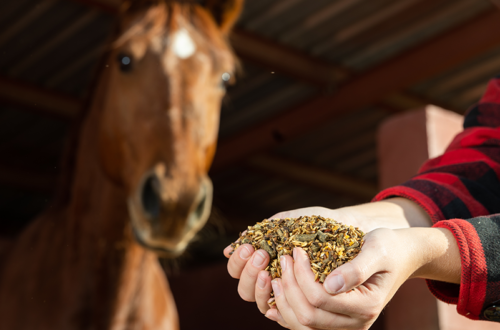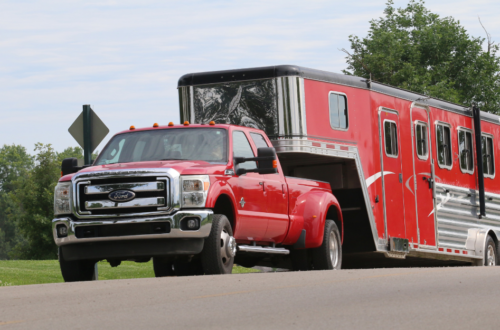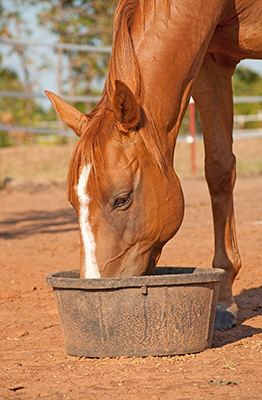
What Does a Feed Tag Tell You?
Provided by Triple Crown Nutrition, the Official Feed Sponsor of USPC
Selecting the right feed for your horse or pony is an important task to ensure they are getting the correct balance of nutrients for their specific needs. If you need assistance, your vet or a knowledgeable equine expert at your local feed store or horse feed company can help you make the best choice. To start, look at the feed tag on your horse’s feed bag.
There are specific things that must be listed on the feed tag/bag as a recommendation of the Association of American Feed Control Officials (AAFCO) and/or as a requirement of the Food and Drug Administration (FDA), which is responsible for the regulation of animal foods/feeds, and at the state level in cooperation with the FDA.
Feed Tag Requirements
All feed products must list the product name and a purpose statement (that includes what type of horse the feed is intended for), as well as the manufacturer’s name and address. Bags will also list a lot number (or manufactured date code), along with the weight of the bag. Nutritional information will include a guaranteed analysis indicating the feed’s nutrient content. The following are required to be listed: minimum crude protein; minimum crude fat; maximum crude fiber; maximum acid detergent fiber (ADF) and neutral detergent fiber (NDF), which are measures of a feed’s structural carbohydrate components; minimum and maximum calcium; and the minimums of phosphorus, selenium, zinc, copper, and vitamin A (if added). The feed bag/tag is also required to list the ingredients used in the formulation of the feed, as well as feeding directions.
Exploring the Purpose Statement
The purpose statement helps determine what life stage the feed is best suited for. A growth feed is specifically formulated to help growing horses and mares. A higher-fat feed contains additional calories for a hard-working performance horse or for one who requires more calories to maintain body condition. Remember that although a feed may say it is intended for a specific type of horse, sometimes a horse has health concerns that may lead to another more appropriate feed choice. For instance, a performance horse who maintains weight well and doesn’t need a high-calorie feed may need a ration balancer or lower-fat feed. Consult a veterinarian or local feed representative for advice for your specific situation.
The Guaranteed Analysis
The guaranteed analysis contains information about the levels of vitamins and minerals found in your horse’s feed. Earlier we stated what is required to be listed at the very minimum, but some companies voluntarily guarantee additional vitamins, minerals, and may even include digestion enhancements, such as enzymes, prebiotics, and probiotics. The values are listed as a guarantee to let consumers know their horse will receive the nutrients at the specified levels.
What an Ingredient List Says
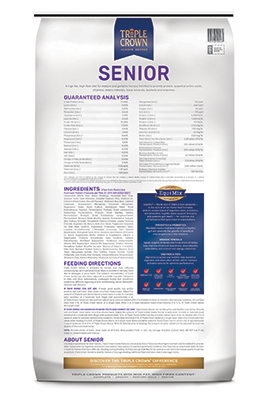
Feed manufacturers are required to list all feed ingredients on the product bag. Ingredients are listed from highest to lowest inclusion rate (amount of an ingredient) in most states, but not all. Looking at the top five to seven ingredients may give you insight on the general makeup of the feed. In addition, you will find all the vitamins, minerals, digestive support, and other ingredients a manufacturer deemed important to include in the feed.
It is important to note how a specific ingredient is named on the bag/tag to determine if the formula is a fixed formula/fixed ingredient feed or a least-cost formula feed. If the product lists ingredients using general or collective terms such as “grain by-products” or “roughage products,” the product is known as a least-cost formula feed. For instance, if the tag lists “processed grain by-products,” nearly 40 ingredients are available to use in the formulation if it meets the guaranteed analysis. While a least-cost formula is not necessarily bad, it doesn’t tell you exactly what ingredient is being used. If you have a horse that has a feed ingredient sensitivity or allergy, this may not be the type of product you want to use. Furthermore, horses with metabolic issues should avoid products using cumulative terms since the starch and sugar value would be constantly changing.
Selecting the right feed for your horse or pony may not be easy, but it is an important task to ensure they are getting the best feed at proper amounts to help set them up for success and a healthy life.
Have additional questions about feed tags or creating a feeding program to meet your horse’s nutritional needs? Talk to a Triple Crown feed expert at www.triplecrownfeed.com or call 800-451-9916.
Read Those Feeding Directions!
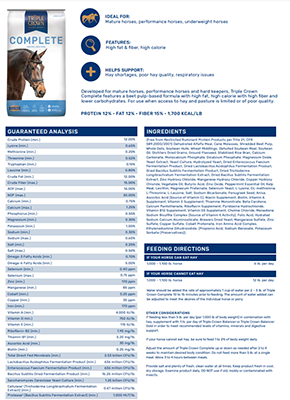
This can be one of the most common areas where horse owners make mistakes. The feeding directions tell you how many pounds of the product you should feed daily based on a horse’s weight and work level in order to receive the level of nutrients guaranteed on the tag. Be sure you are feeding the product according to the manufacturer’s directions! If you have a horse that is not able to eat the daily minimum for reasons such as becoming overweight, you may be feeding the wrong feed. Consult a veterinarian or feed company representative for help. If you are not able to feed the daily minimum, you may simply need to add a ration balancer to help achieve proper nutrient support. Ask an expert for help in balancing various feedstuffs.
This article about feed tag tips was originally published in the Spring/Summer issue of Discover USPC magazine. Read more content from that issue.

About Triple Crown Nutrition — Official USPC Feed Sponsor
Triple Crown offers premium equine feeds that provide the exact nutrition your horse needs, designed to help support immunity and gut health. Learn more at TripleCrownFeed.com.



